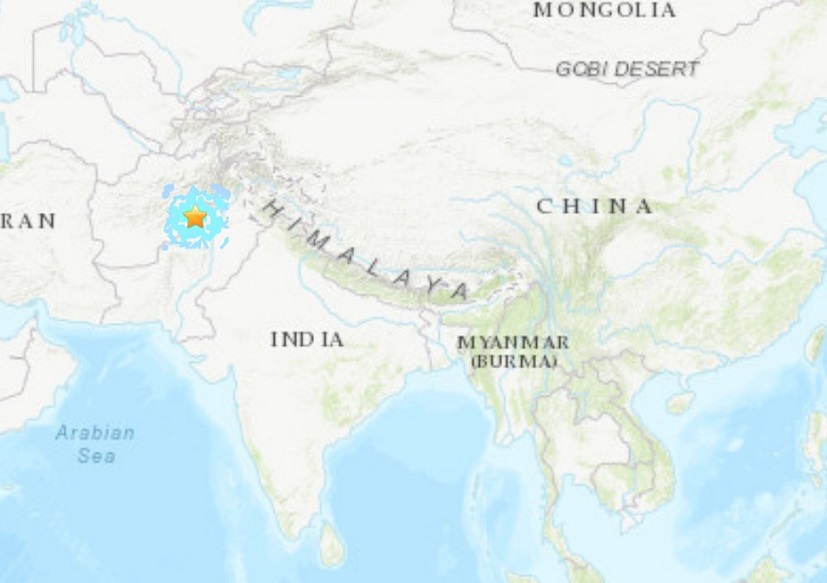ON June 21, a magnitude 5.9 earthquake (USGC) occurred in the border area of Afghanistan at a depth of 10 km. The shallow depth of faulting is dangerous, mainly when the region is not prepared to face medium to large earthquakes. The war-torn country has a lengthy history of political problems, which resulted in no ground preparations to deal with earthquakes, and other similar hazards. The stable political landscape of a region generally decides the future of a nation, and that in Afghanistan has not been advantageous, resulting in an economic crisis, apart from a range of other issues.

It is essential to realise that such a magnitude earthquake in a well-prepared nation like New Zealand or Japan will not usually cause any damage or death. Therefore, earthquake-related losses could have been minimised to a large extent had there been proper planning in practice. In that sense, it is a human disaster, and we ought to be honest and accept that reality.
The earthquake threat in South and SE Asia (e.g., countries like Afghanistan, Pakistan, India, Bangladesh, Nepal, Indonesia etc.) is because of the interaction between the tectonic plates of India and Eurasia. Tectonic plates do not follow political boundaries, and it is through the plates that we relate to each other.
The ongoing northward journey of India started more than 50 million years ago which caused a tectonic collision with the Eurasia plate and, with that, the formation of beautiful mountain ranges, valleys, and rivers, which are the main attraction for people living in those regions, and tourists are often magically glued to the scenic views of those regions.
The geomorphology of Kashmir makes it one of the most iconic regions in South Asia because the valley is an oval-shaped basin which is surrounded by the mountains of Pir Panjal and the Himalaya Ranges. These mountains are often covered with snow, adding an extra ingredient to the magnificent view of the region. The lush green forests add yet another feather to the beauty, making the region one of the most attractive tourist destinations in the world. However, the beautiful landscape that houses people is shouldered by faults, which cause earthquakes; sometimes large enough to cause significant loss of life and damage to assets.

Historically, Kashmir has witnessed many large earthquakes and our work suggests the remnants of those devastating earthquakes are still fresh in the sediment and rocks of the Kashmir valley. Earthquake hazards are genetic to the valley’s structural makeup; therefore, there is no way we could reverse it. We can only wish that it never comes. However, scientific evidence suggests that medium to large earthquakes can strike the Kashmir region and there is little to no doubt about it. However, the timing can play tricks on us and that is where we must be cautious.
It can happen anytime. Are we ready to face the consequences?
I would say a big No. We have built our buildings on a shaky foundation. We have magnificent residential and non-residential buildings that are often beautifully decorated from within and outside. However, these buildings can technically turn into a pile of rubble overnight if jolted by a strong earthquake. This raises an important question about the safety of our houses.
Are we living in a deathtrap?
It is a bitter reality that we are living in homes that are not safe for us. We must think about it now; otherwise, it will be too little and too late. Look at the devastation in Afghanistan, a less than six magnitude earthquake has caused more than 900 deaths till now, and the number can go up. It is simply mind boggling.
How can a small earthquake result in such large-scale devastation? The answer is simple; the buildings were not prepared to handle earthquakes.It is a lesson for everyone, and particularly for people who have not done any ground preparations to deal with earthquake hazards. Time is ticking; tectonic plates do not wait; they are on their job and could jolt anytime.
Therefore, we must learn from Afghanistan’s example. We are far behind in this struggle but it is never too late to turn things in our favour. Safety comes first and there should be no second thoughts about it. The administration should take the necessary steps to deal with the region’s earthquake hazards. All residential and other buildings must be audited and scaled on an earthquake safety scale, which should be the priority.
All maps from USGC
Views expressed in the article are the author’s own and do not necessarily represent the editorial stance of Kashmir Observer
The author is an Assistant Professor of Structural Geology at the Department of Geosciences, Faculty of Science, Universiti Brunei Darussalam
Follow this link to join our WhatsApp group: Join Now
Be Part of Quality Journalism |
Quality journalism takes a lot of time, money and hard work to produce and despite all the hardships we still do it. Our reporters and editors are working overtime in Kashmir and beyond to cover what you care about, break big stories, and expose injustices that can change lives. Today more people are reading Kashmir Observer than ever, but only a handful are paying while advertising revenues are falling fast. |
| ACT NOW |
| MONTHLY | Rs 100 | |
| YEARLY | Rs 1000 | |
| LIFETIME | Rs 10000 | |











